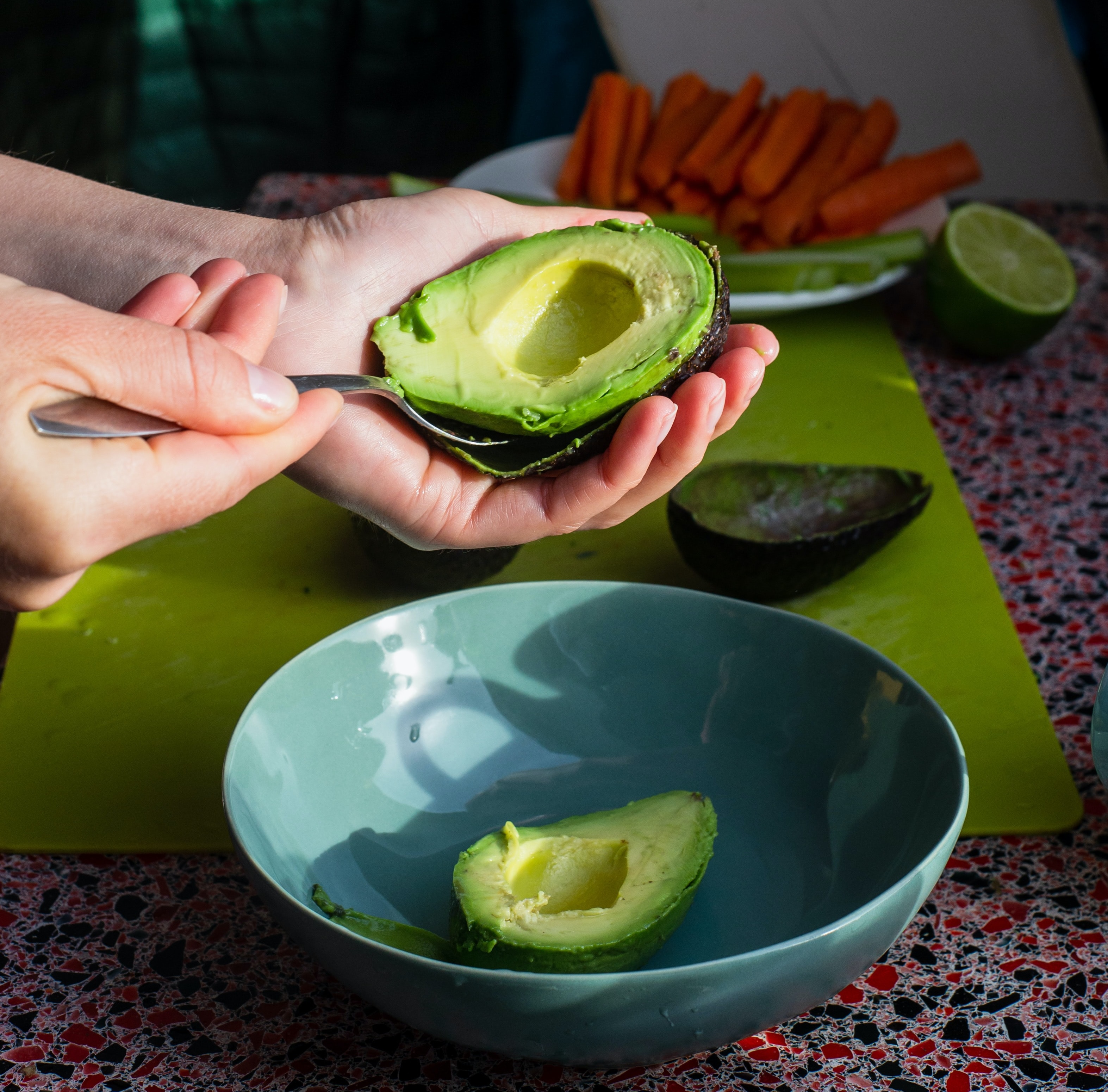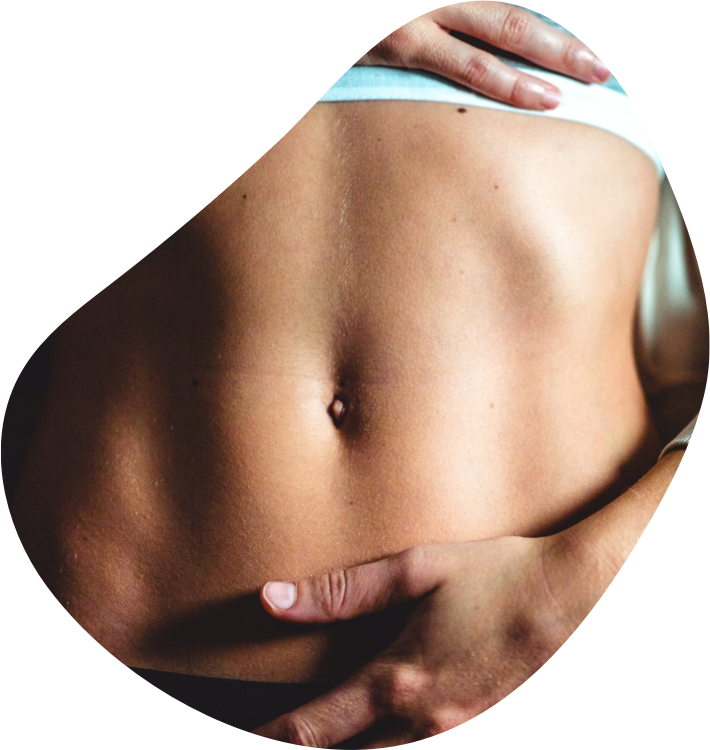The ketogenic diet (keto diet) is a low-carbohydrate, moderate-protein and high-fat diet that aims to burn fat over carbohydrates. It is used in specific instances, for example, people wanting to reach certain weight-loss goals.
A ketogenic diet can help you to gain metabolic flexibility. By making our body use fat for energy rather than carbohydrates, our metabolism shifts and it can break patterns of stubborn weight gain. We don’t recommend this as a forever diet, but rather a tool that you can use to switch up your metabolism and reduce insulin resistance.
But first… How do we burn energy?
Our bodies use two main sources of energy as fuel: glucose and fat. The keto diet proposes that if carbohydrates are removed from the diet, the body switches over to burning fat for energy. This state is known as ‘ketosis’. This is why it is a potentially helpful diet for those wanting to lose weight. A high-carbohydrate diet can have many negative effects including that of blood sugar (glucose) highs and lows, which can lead to insulin resistance and chronic disease.
What is insulin resistance?
Insulin is a hormone that regulates blood sugar (glucose) in the body. When there is insulin resistance, the body stops responding to insulin. From this, glucose builds up in the blood and can lead to Type 2 Diabetes. The good news is you can reverse insulin resistance via a healthy diet, exercise, and weight loss (if weight is an issue).
FUN-FACT FOR THE SCIENCE LOVERS – KETONE BODIES
Ketosis allows the liver to convert fatty acids into ‘ketone bodies’. These ketone bodies become the main source of energy utilised by the brain for daily functions.
A keto diet requires only 20-50 grams of ‘net carbohydrates per day. It is best to track your carbohydrate intake and we recommend the app ‘Carb Manager’ to do this. Net carbohydrates is the total amount of carbohydrates minus the amount of fibre in the food item:
TOTAL CARB COUNT – FIBRE COUNT = NET CARB
Keto Benefits:
- Reduced risk of some chronic diseases such as diabetes and obesity.
- Weight loss
- Decreased sugar cravings
- Enhanced metabolism
Keto is Unsuitable for:
- Infants
- Children
- Teenagers
- Pregnant and breastfeeding women
- Individuals who are on particular medications
- Particular individuals with health-related conditions or illnesses, so it is always best to be approved by a healthcare practitioner before embarking on a keto diet.
Ok, this is suitable for me. How do I start?
Remove refined carbohydrates from your diet
This includes foods with refined sugar, grains, foods made from grain such as pasta and bread, and foods like those sweet treats found in colourful packaging! Instead, allow your carbohydrate intake to be from vegetables, seeds and nuts.
2. Ensure you are eating quality protein sourcesProtein is an essential macronutrient for health and wellbeing. If you are able to source grass-fed and/or organic meats then they are the way to go. You can also include plant-based protein sources in the form of legumes, seeds and nuts.
3. Healthy fats are essentialGood-quality fats are the building blocks for this diet. Feel free to cook with Extra Virgin Olive Oil (EVOO), coconut oil and ghee that can generally withstand the higher cooking temperatures. This means that the oils don’t go rancid when cooking. Other oils that can be used as a dressing for salads or meals include: hemp seed oil, macadamia oil, avocado oil, and EVOO. Avocado is also a great healthy fat source to include. Organic animal fats are great too.
4. Drink plenty of waterHydration is so important for bodily functions. If you struggle with water intake, this needs to change quick-smart! Ensure you are drinking at least two litres of water per day, perhaps even up to three litres if you exercise regularly and drink caffeinated beverages.
5. Have lots of colour in your mealsColour is where the nutrients are! Make sure you’re having a ‘rainbow’ of colour in each meal as this will boost your nutrient intake through food.
Food List
Foods | To Have | To Avoid |
Vegetables | Alfalfa, artichokes, Asian greens, asparagus, baby spinach, bamboo shoots, bean sprouts, bok choy, broccoli, broccolini, brussels sprouts, cabbage, capsicum, cauliflower, celery, chard, cucumber, eggplant, endive, fennel, green beans, kale, kohlrabi, leeks, lettuce, mushrooms, okra, olives, onions, radicchio, radish, rocket, sea vegetables, snow peas, spinach, sprouts, squash, tomato, watercress, zucchini. | Potatoes, sweet potatoes, corn, cassava, carrot, pumpkin, beetroot. Various vegetables have varying amounts of carbs, but the best choices are broccoli, spinach, kale, cauliflower, zucchini, cucumber and celery. |
Fruits | Small amounts of berries – raspberries, blackberries and blueberries are best. | All other fruit. |
Nuts & Seeds | Brazil nuts, flax/linseed, macadamia nuts, pepitas, pine nuts, pecans, pistachios, sesame seeds, sunflower seeds. Small amounts are OK. | Most nuts are off the table, especially almonds and cashews. |
Meats & Eggs | All meats, all fish, eggs. | Highly processed meats. |
Dairy (if allowed) | Butter, ghee, goats cheese, ricotta, Greek yoghurt (unsweetened), hard cheese. | Ice cream, sweetened yoghurt, custard, milk. |
Herbs & Spices | All herbs and spices. | Onion and garlic (large amounts). |
Oils | Cold pressed (extra virgin if possible): olive oil, coconut oil, sesame seed oil, macadamia oil, avocado oil, hemp oil, butter. | Canola oil, sunflower oil, safflower oil, and mixed vegetable oils. And any oil that is not cold pressed. |
Condiments & Sauces | Lemon juice, lime juice, mustard, pesto, tamari sauce, apple cider vinegar, wasabi. | All condiments and sauces with added sugar. |
Beverages | Water, mineral water, herbal teas. | Soft drink, cordial, drinking chocolate, milk, flavoured milk, fruit juices, sweetened coffee blends. |
Soy Foods | Miso. Small amounts of tempeh, tofu. | Sweetened soy milk and yoghurt. |
Sweeteners | Stevia, monk fruit, thaumatin. | Sugar, honey, fruit concentrates, fructose, artificial sweeteners. |
Easy Food-Swaps
- Bread → Nut and seed bread
- Buns, rolls, or wraps → Cos lettuce leaves
- Flour → Almond meal
- Pizza bases → Homemade almond or cauliflower pizza bases
- Pasta → Spiralised zucchini noodles or kelp noodles
- Milk → Nut based ‘mylk’
- Mashed potato → Mashed cauliflower
- Fries or chips → Zucchini or parsnip chips
- Potato chips → Kale chips
Keto Diet Example:
Breakfast – Savoury Mince and Veggies in Broth
Lunch – Chicken and Vegetable Soup
Dinner – Coconut Veggies




